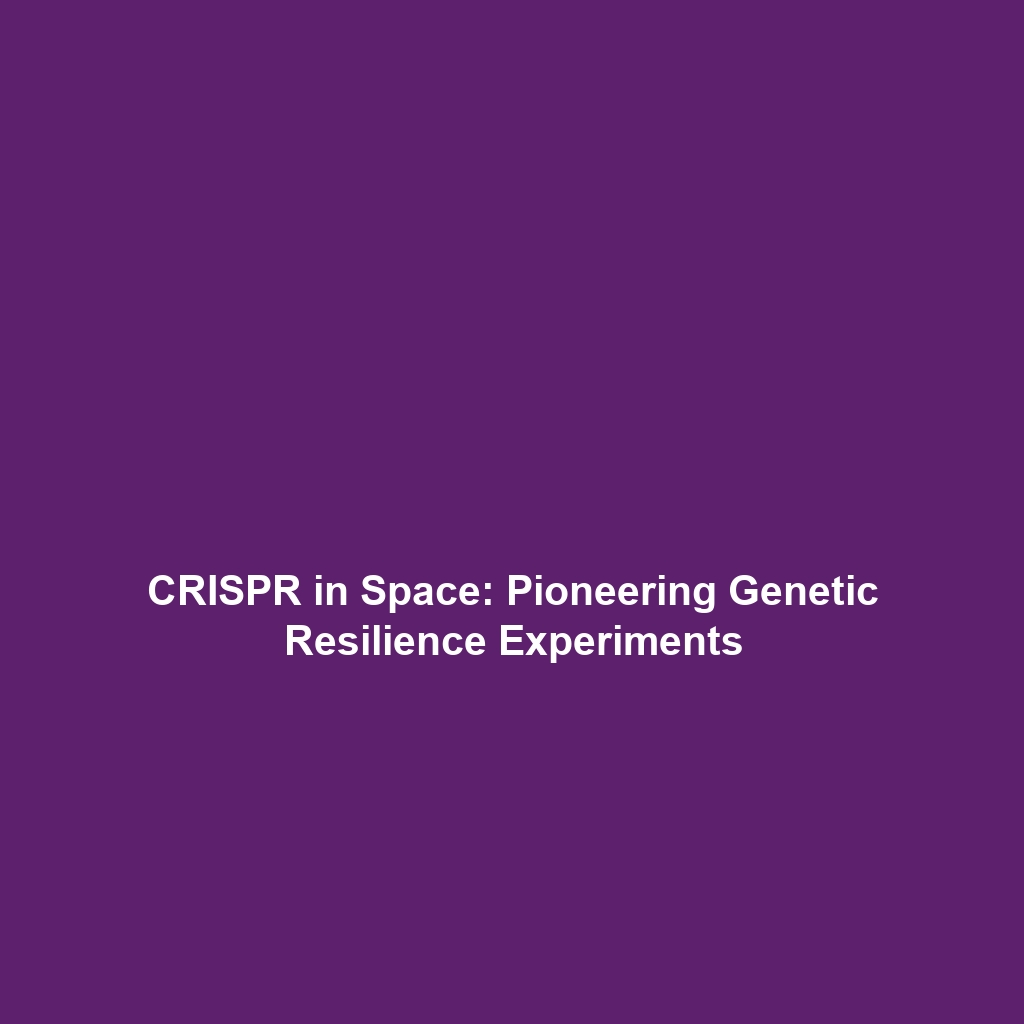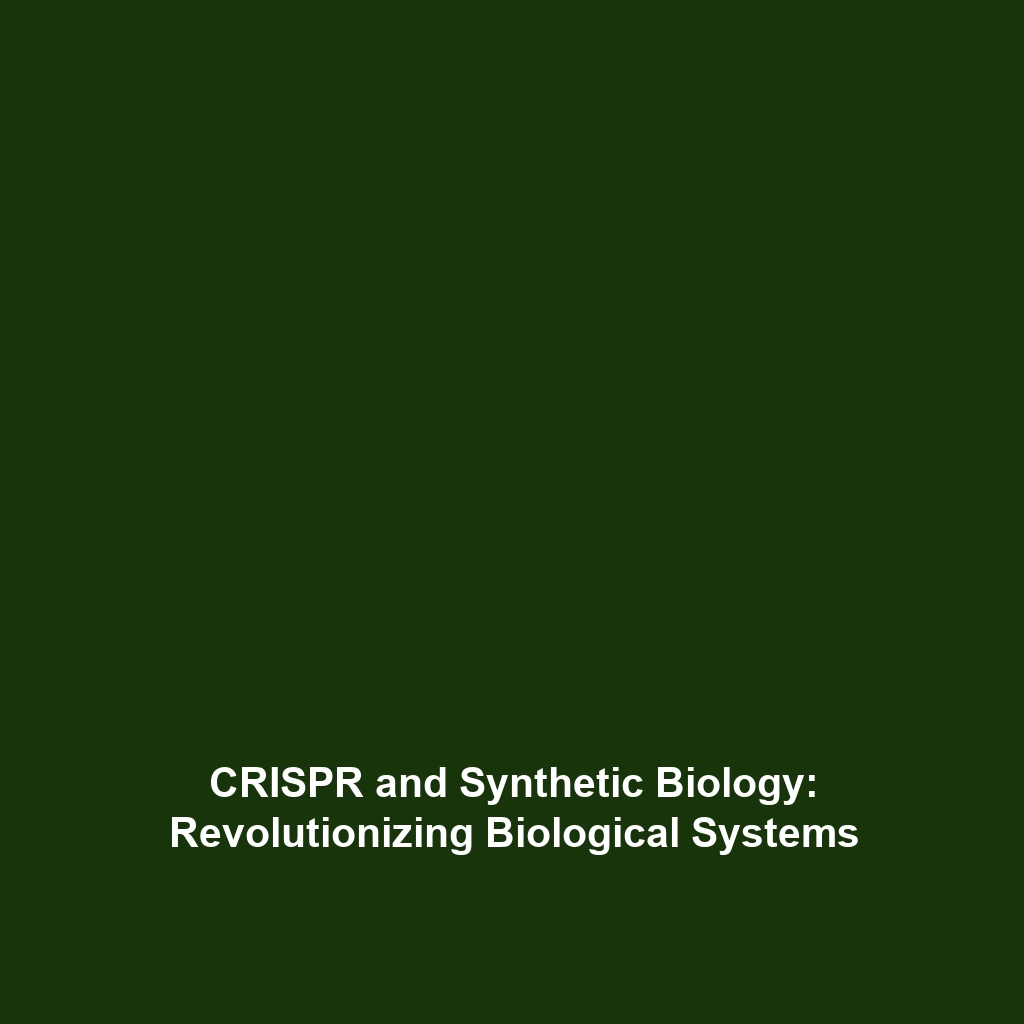Exploring Early Experiments in Space Involving CRISPR and Genetic Resilience
Early experiments in space utilizing CRISPR technology hold significant potential for understanding genetic resilience and adaptation in extreme environments. As researchers look to the cosmos, the applicability of CRISPR gene editing expands beyond Earth, helping to assess how life adapts to conditions found in space. These groundbreaking studies not only enhance our understanding of genetic mechanisms but also pave the way for advancements in CRISPR gene editing techniques. In this article, we will delve into the major concepts, applications, challenges, and future innovations surrounding this fascinating intersection of CRISPR and space exploration.
Key Concepts of CRISPR and Genetic Resilience
CRISPR (Clustered Regularly Interspaced Short Palindromic Repeats) is a revolutionary gene-editing technology that allows for precise modifications of DNA sequences. When applied to studying genetic resilience in the unique conditions of space, the technology focuses on:
- Genetic Resilience: Understanding how organisms, such as plants and microorganisms, maintain their physiological functions under stressors like radiation and microgravity.
- CRISPR Mechanisms: Utilizing CRISPR-Cas9 systems to study gene functions associated with resilience, providing insights into adaptive processes.
- Space Conditions: Investigating the impact of extraterrestrial environments on genetic expression and mutation rates.
Applications and Real-World Uses
The applications of early experiments in space involving CRISPR and genetic resilience are both innovative and practical:
- Agricultural Advancements: CRISPR-modified crops are tested in space to assess how they could be improved for resilience against environmental stresses.
- Microbial Studies: Investigating how space microbes can be edited for enhanced resilience, leading to potential biotechnological applications in Earth’s extreme environments.
- Human Health: Understanding genetic adaptations may inform future therapeutic strategies for maintaining human health during long-term space missions.
Current Challenges in CRISPR and Space Research
Despite the exciting potential, challenges persist in the study of early experiments in space involving CRISPR and genetic resilience:
- Technical Limitations: Difficulty in implementing CRISPR methods in microgravity environments presents challenges for experimental design.
- Ethical Considerations: The implications of gene editing, especially in human subjects or organisms, require strict ethical oversight.
- Resource Constraints: Limited access to necessary facilities and funding for extensive space-based studies hinders research progress.
Future Research and Innovations
Looking ahead, early experiments involving CRISPR and genetic resilience are set to evolve substantially. Anticipated research focuses include:
- Next-Generation CRISPR Tools: Innovations such as CRISPR-based gene drives could amplify resilient traits in space environments.
- Bioregenerative Life Support Systems: Future space missions may utilize CRISPR technology to develop plants with enhanced growth and resilience, essential for sustainable life support.
- Gene Editing Breakthroughs: Ongoing advancements could allow for real-time genetic modifications, further enhancing adaptability in adverse conditions.
Conclusion
In summary, early experiments in space utilizing CRISPR technology not only enhance our understanding of genetic resilience but also contribute to the broader field of CRISPR gene editing. These studies hold the potential to revolutionize agricultural practices and human health in space and on Earth. As we continue to unlock the possibilities of CRISPR in extraterrestrial settings, it is crucial to promote further research and ethical considerations in this rapidly evolving field. For more information on CRISPR and its applications, explore our articles on CRISPR Techniques and Genetic Engineering in Agriculture.

